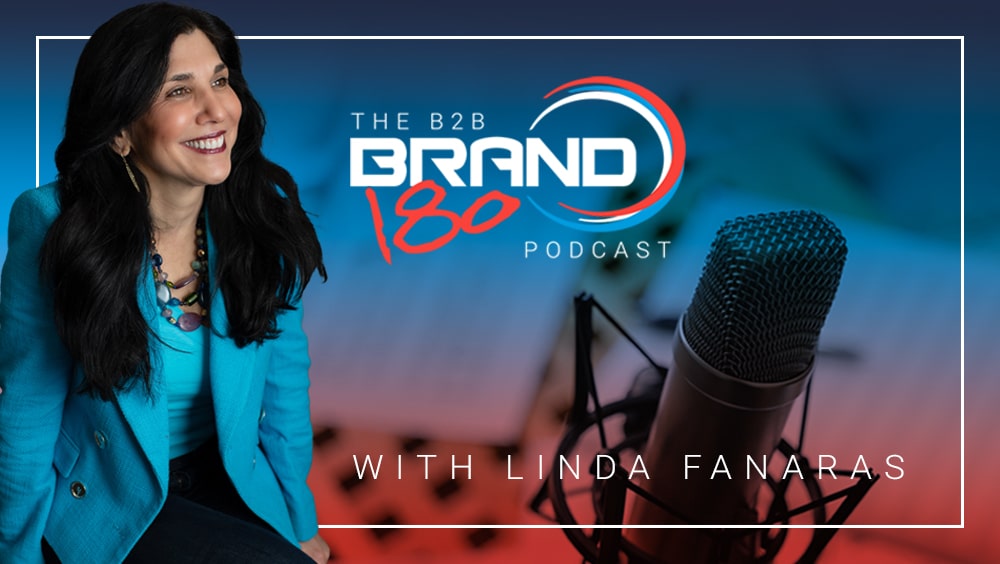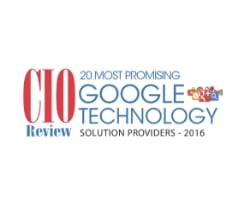In this episode of the B2B Brand180 Podcast, Linda interviews Drew Neisser, CEO at CMO Huddles, podcast host, business coach and author. They discuss the challenges CMOs face in a recession including budget cuts, the importance of brand reputation, and the role of AI. Drew shares insights from his extensive career and explores current industry trends, providing practical advice for navigating economic downturns and leveraging new technologies.
03:03 Challenges and Strategies in B2B Industries
05:47 The Evolving Role of the CMO
07:59 Navigating Budget Cuts and AI in Marketing
15:02 Addressing the Hidden Recession in B2B
16:36 Effective Strategies for B2B CMOs
More About Drew:
http://www.cmohuddles.com
https://www.linkedin.com/in/drewneisser/
Linda’s LinkedIn: https://www.linkedin.com/in/lindafanaras/
Millennium Agency: Brand Strategy | Marketing | Web Design: https://mill.agency
YouTube Channel: https://www.youtube.com/@mill.agency/
Linda’s Books:
Claim Your White Space
https://www.amazon.com/CLAIM-YOUR-WHITE-SPACE-CRITICAL-ebook/dp/B0CLK8VLYV
Passion + Profits: Fueling Business And Brand Success
https://www.amazon.com/Passion-Profits-Fueling-Business-Success-ebook/dp/B0CLLDDSNX/
Linda Fanaras:
I’m Linda Fanaras, host of the B2B Brand 180 Podcast and CEO of Millennium Agency, where you’ll learn all the latest tips on how to grow your business with branding, strategy and other lead generation. Today, I am super excited to bring in Drew Neisser. He has had a large career specifically working for some big agencies and he founded Renegade in 1993. So he’s won just about every every possible award out there regarding creativity and marketing effectiveness. He’s written some books and which I’m sure he’ll share a little bit more. But what is great about Drew is, is he’s really going to bring us some insight today around B2B marketing and strategies that really do work. And one of the bestselling authors. bear called him one of the strongest B2B marketing thinkers in the world, which he says makes him laugh, but what makes his wife laugh. But I’m actually going to ask him a few questions about that. So welcome drew. Super happy to have you here today. Thanks for joining in.
Drew Neisser:
Thank you. The last four years have been a joy ride doing CMO Huddles, which is part of the way I’ve really become this B2B expert. So, anyway, thank you for doing this. I know how much work it is to do a podcast, so I really appreciate being on your show.
Linda Fanaras:
No, I love having you here. So is there anything else you’d like to add about your background today?
Drew Neisser:
Gosh, you know, I am I’m a passionate marketer and I’ve been interviewing CMOs for well over 10 plus years probably, I think it’s I’ve lost count. It’s over 600 and that is like my mana. That’s how being able to talk to CMOs, interview them, go through their case histories has really given me a pretty profound look at it at the, the challenges CMOs face, particularly in B2B and also. As a coach, which I do more and more of both in the capacity of CMO Huddles as that’s if you think about it as a large coaching group, but also one on one.
Linda Fanaras:
Awesome. So my first question really to you, Drew, is why do you think you were defined as one of the strongest B2B marketing thinkers in the world? That’s a pretty big statement.
Drew Neisser:
You know, I, I so I just sent Jay a copy of my book and Jay has been on my podcast a couple of times, but I tell you what, almost once, maybe once a month some I’ll get a praise for something. Someone will send some nice feedback and my wife will say, That’s because you’re one of the strong and she can’t quite get it exactly right. So we have this big chuckle over it. You know, I have been told that it is when someone makes you accomplishment, just accept it. I’m one of those folks who of course struggle with that. But anyway I’m delighted that Jay said it. I, I think my book Renegade Marketing, 12 Steps to Building Unbeatable Brands really resonated with him. And we had enough conversations and we’ve spoken at certain events together that He has a sense for my insight, I guess.
Linda Fanaras:
that’s phenomenal. So tell me on the B2B side, there are many, many different types of B2B industries out there. Which ones do you think are doing well? Which ones are, I don’t want to say failing, but maybe not doing so well. What’s your, what’s your thoughts on that?
Drew Neisser:
So I’ve got thoughts and then I’ve got research. So on the, on the research side, I could just hear, we did a study of 121 B2B CMOs earlier in the year, and 69 percent think their industry is in a recession. So that’s, you know, that’s almost seven out of 10. The only ones that didn’t feel like they were in a recession tend to have some AI component that was keeping them moving. And, you know, going back to that study for just a second. The thing about it is that when your industry is a recession. Your budget gets cut. It gets harder to do it. Buyers are much more likely not to buy or stretch out the deal cycles. And we saw all of that in the data and CMOs are forced to cut their staff and along with their budget. So you just have what I would describe for most as the most stressful period in recent memory for these folks. I mean, 61 percent feel this is the most professionally challenging period of their time. So. There’s like two economies out there. They’re sort of B to B in general. And then there’s sort of the AI folks. And I can say there’s a little bit of growth in health tech and a little bit of growth in, but there’s no growth in MarTech. So everybody’s, it’s a share battle. So anyway, we all need interest rates to go down and And, and when that happens we’ll, we’ll have a lot more happy B2B marketers.
Linda Fanaras:
I guess I’m wondering is manufacturing versus energy versus other things. Do you, did you take, do you have any data related?
Drew Neisser:
So, you know, in general sense, obviously things like solar are doing well, but they’re, they have supply chain issues. So, cause one of one of the huddlers in our CMO Huddles community is works for for a solar company and their growth is restrained by certain factors. So they should be doing well. Martech. Is not as a general rule is not doing well at all. And that’s any kind of thing that helps a marketer you know, do their marketing more efficiently or measure more things. So, in terms of manufacturing again, look at, you know, you have to look at it on an individual basis. These are still growing, but Tesla isn’t right. There’s pockets of success out there, but it’s pretty spotty again. I think if you threw a dart at a B to B company, chances are you’d hit one that was not doing as well as they did in 2022. Right?
Linda Fanaras:
You know, I’d love to talk more about the CMO role because I’ve been around the block for a while, so things have just become more and more complicated for the CMO in so many different ways. There are so many different ways to market today. There are so many different things to track. It’s hard to know what’s working and what’s not, and it’s becoming more confusing. So I’m just, from your perspective, why is the CMO role more challenging now than
Drew Neisser:
ever before? So you’re right. You hit on a lot of the things. I mean, besides the media choices and the technology and the splintering of it you could go to almost any category and you would probably find 50 competitors in it. So there’s too many companies chasing the same, the same customers. It’s very few brands have any kind of mind space, which is really the objective of, of all of our marketing. So. The job has always been hard, and one of the primary reasons that folks don’t acknowledge is that less than 20 percent of CEOs, and it doesn’t even matter what size company it is, in B2B have any experience in marketing.
Linda Fanaras:
That’s interesting.
Drew Neisser:
And so you have executives who are making decisions on budgets and where to allocate budgets who have no idea how, you know, how the sausage is made, so to speak, how a marketing plan is put together. They also don’t really have a sense for what differentiation looks like. And so, and how long it takes. And that’s a real problem because, and by the way, this, company, this couldn’t ha managers control the budg P. N. L. They know what d doesn’t work that way in have a lot of disconnecti CEOs. I write about this a lot on LinkedIn. You have CEOs who say, just spend money on ways to get me leads. That’s all they want. It doesn’t work that way. If you don’t understand how marketing works and how brands are built as a CEO, you are doomed to be frustrated with your CMO.
Linda Fanaras:
Right. Right. Yes. Like it’s cast a wide net. It doesn’t work that way.
Drew Neisser:
Right.
Linda Fanaras:
Right. So when it comes to that CMO role you know, and they are looking at difficult, challenging times, how do you think they should go about maybe cutting their budgets, looking at staffing You know, or go to market plan and how does AI plan into all this now? Sure. Because that’s a whole other element that I think, you know, marketers are dealing with and trying to navigate that in the most effective right way possible.
Drew Neisser:
So cutting the budget’s really an interesting thing. And I’ve seen this and we’ve had lots of conversations in, in CMO Huddles about budget cuts. And typically what happens, let’s say it’s a 10% cut. They’ll look for the low hanging fruit in their staff. They’ll look at their low hanging fruit with quote, the underperforming media. And. They’ll pretty much stop there and they’ll just cut those things. And, and what we talk a lot about is you really need to start again and say, I have a new budget, which means I have to focus my budget in a different way. I can’t reach as many people. I don’t need as many staff, but what happens is they don’t build from the new plan. They just cut where they are. And so what you end up having is they’re still spending too much on MarTech. Okay. Like, you’d be amazed anytime you see that number go over 10%. In my mind, it’s too much, but it’s at 15 or 20 percent after a cut. And part of that is long term contracts and so forth. But that’s part one of this is you gotta, you gotta look at your MarTech and you gotta cut it because there’s no point in having 15 percent of your dollars, not going to something that’s, that’s going to reach or to, or to generate demand or, or at least enhance your brand, something.
Linda Fanaras:
Exactly. Exactly.
Drew Neisser:
So that’s part one. Part two is rethinking your staffing. All right. So we have a smaller staff. And we have a smaller target audience and we hopefully have a more focused program. Are we suffering at the right way? So you gotta step back. You can’t just simply say, well, that person’s only been here three months. We can get rid of them. And that person is not really performing very well. And so that’s the post cut planning process needs to be rethought. That’s part one of this. I’ve got more thoughts on, on the CMO playbook that will get them through this period.
Linda Fanaras:
And on the staffing side too. I mean, there are alternatives. You’re right. It’s not just, Oh, they just started. Let’s cut them. It’s really analyzing. What needs to get executed and how to best execute that in the most cost-effective way possible. And that might include contractors or working with very niche agencies and other strategies like that.
Drew Neisser:
Exactly. Yeah, exactly. Right. So you could think about, all right, well, we’re doing a lot less of this. Do we even need to have that in house anymore?
Linda Fanaras:
Exactly. Or is that costing us too much money to execute? Would that be more effective outside using a different strategy or tactic?
Drew Neisser:
And so you also asked about how AI is and this is a real problem in the industry right now. So there’s a perception out there. Well, AI could just create all your content. So you don’t even need content staffing and nothing could be further from the truth because AI generated content on its own is useless. Absolutely useless. I’m not saying that there aren’t a million ways of using A. I. To generate better content, but that’s not necessarily getting rid of your best writers and this relates right to the C. M. O. Which is They’re looking at chat GPT and these tools solely as content generators. And to me, that’s so problematic because that’s the low hanging fruit of this thing. And in truth, most of that content isn’t going to be what you, what’s going to help you really differentiate from What will help you differentiate using these tools for sales enablement to create the widgets that you couldn’t create before that you’d needed a programmer and you had to wait for your it guys and all that. You can figure out how to create these widgets, which actually be T and a heartbeat.
Linda Fanaras:
So
Drew Neisser:
Suddenly, if you have a big idea and you know this from running an agency, when you have a big idea, you can iterate against it. Right? So we have this big idea. Okay, now let’s iterate. How many different ways could we execute the same idea and bring it to life from a sales enablement from a customer experience? All that. And that’s where it’s mind bogglingly cool. That’s part one. Part two is using AI for strategy. So it’s really an interesting time and I, I think that you could probably use a generative AI for just about everything. And and I find myself doing that more and more. I find that like we have a, we support a group of CMOs in transition and there’s some amazing things that you can do from an interview prep standpoint, from an analysis of your questions and the answers from how to deal with tough questions to practicing, to creating your, it’s unbelievable how how effective that’s that is. So, anyway, there’s no such thing as a CMO who isn’t embracing these things. It’s just a question of how.
Linda Fanaras:
So to your point on that, and I think AI is a, is a really good example because, you know, some companies do not want to touch it. Other companies are using it for everything, but from a marketing perspective, to your point, I think it’s a great opportunity to use AI for ideation, maybe to be able to build up, you know, concepts around strategies that could be a little unique and not the same old, just to, just to start that process going, obviously it writes content. We know that. It writes, you know, can write very generic content, and to your point, you want to get A writer that can actually sort of make it into something unique and different and not just generic content. So it does provide a great purpose. It’s just how do you use that in the most effective way possible,
Drew Neisser:
right? And how do you get it? The usage beyond the CMO, I mean, I think CMOs need to be using it. They tend to be some really jump at it. Some just delegated and I, you know, that’s unfortunate cause they don’t get to see possible that way. That’s a funny moment because when you say that there are companies that don’t want to touch it, it reminds me in the year 2000, three of us from digital land went to visit craft and the whole marketing department said, Hey, there’s this internet thing and you got to get on it. And none of the employees at craft at that time had access to the internet because the, the, you know, the head of the company was afraid that everybody would look at porn, you know, I mean, it was hilarious. And, and so, you know, they ended up being way, way behind. They caught up. They figured it out, but there’s some first mover advantage to be had.
Linda Fanaras:
Absolutely. So I’ve heard all kinds of things in the B2B space, you know, looking at the economy, looking at the emotions that tie into the stock market, looking at all different types of areas within the B2B space. Do you think there’s a hidden recession right now?
Drew Neisser:
Oh my God. Yeah. Oh, I, I don’t think there’s any doubt. All you have to do is you sit down, have a one on one with a CMO and this came out in our research, but ask them how is your deal cycle longer or shorter than it was six months ago or a year ago?
Linda Fanaras:
Longer.
Drew Neisser:
That’s number one. Is your close rate better or worse than it was 12 months ago? Right. Worse. Right. And so those two things alone, and then how many, Deals. Did you think you were going to do where the customer didn’t buy anything? Right? All of those are clear indications. And you know, how many of the head layoffs, like 50 percent in our survey in March had had layoffs. I know that number has gone up. And that’s the company and 41 percent had layoffs in marketing. So I don’t think there’s any doubt that in B to B, particularly like in SAS there is a session, a recession. Again, there are always exceptions to all of these things. I mean, there’s some companies that are killing it. Out there. I suspect many of these other companies will turn it around because there’s, you know, recessions are a sentiment. It’s an emotional feeling. I’m not going to buy now because I’m worried about our business tomorrow going to happen. When the sentiment gets better, people make purchase decisions. And so they’re more risk averse than they usually are right now. So, yeah, it makes sense.
Linda Fanaras:
The, the buying cycle is longer too. It can take longer. It seems to be taking longer now as well. Yeah. Instances, some industries. So what do you think’s working for the B2B CMOs right now?
Drew Neisser:
Well, you know, this is the thing that, that I, I emphasized in the recession report, the hidden recession report that we did. I gave three things that I think CMOs can do right now to not just protect their job, but deliver more for their companies. Part one is think about expanding the role. So we call it CMO plus and find that thing that you can grab, whether it’s internal comms or corporate comms customer experience or customer success. If that’s a separate thing, add that to your portfolio. Because one, it makes. your salary and so forth, that much more efficient to the organization, but two, it will get the CFO, the CEO, the CRO to look at you slightly differently, more as a business professional and less at, Oh, just the marketer. So that’s part one. Part two is focus. You know, I mean, let’s face it. The definition of strategy is what you say no to. And what I see when I see most B to B plans is what we call the peanut butter effect. Too many targets, too many message, too much splinter, no resonant, big idea. And they’re losing the battle. They are not known for anything. They’re, you know, they’re, they’re trying to, and they’ve sliced and diced their target and their message. The point that they don’t have a brand, they don’t stand for anything. So idea concentration, number two number three is obviously AI implementation beyond content. And then number three, four is really rethinking spending
Linda Fanaras:
less
Drew Neisser:
on MarTech. the swing over the last four years has been 90, 95 percent quote demand gen, 10 percent on brand and really got to fix that and you know, don’t use the word brand, use the word reputation because that seems to be less fluffy and people understand that. But the point is that if you just keep sending emails and go to the vents and expect your brand to grow, you’re going to have a problem.
Linda Fanaras:
Yeah. So getting more and more cluttered every minute. Absolutely. So this, so I have one final question. This one’s super easy. And I’ll let you, I’ll let you share a little bit about your book.
Drew Neisser:
Oh, sure. Thank you. Just happen to have a copy right here. Randy Martin, 12 Steps to Building Unbeatable V Brands. What I love and I, you know, we’ve gotten lots of folks to write reviews about it and they, what they enjoy are the stories. It’s what we remember. It’s also sort of part of the book is the medium is the message. If I, if this was boring, that’d be a problem because this is sort of B2B marketing. I’m talking to marketers. And I really wrote, I just included. I don’t know, 60, 70 different stories within here, some of which are really dramatic. And like one of my favorite stories in the book, cause I had the privilege of naming the tough book for Panasonic and launching it. And the way we launched it was when we got the first prototype from Japan, we ran over it live for, you know, good morning America from the equivalent of CES with a Hummer, a 6, 000 pound Hummer. So it was, and you know, you could just imagine the engineer sweating, but you know, it’s, it’s the kind of story that I include in the book to sort of inspire folks. strategically and simply to do marketing that makes a difference.
Linda Fanaras:
Think out of the box a little, right? Well, everyone, I just want to take a moment and thank you for tuning into the B2B Brand 180 podcast today. We hope that you found the insights and strategies shared to be valuable and actionable. Thanks so much, Drew. That was great to have you here today. So I would love for you to share how businesses can get in touch with you, how CMOs can get in touch with you.
Drew Neisser:
Sure. It’s Drew Nizer on LinkedIn. I have a pretty big following there. Or you can go to https://cmohuddles.com/ and you, you can find me there. And feel free to, you know, after, after Linda’s podcast, you can also check out https://renegademarketing.com/.
Linda Fanaras:
Yeah.
Drew Neisser:
Particularly if you’re a B2B person.
Linda Fanaras:
Perfect. And we’ll also include all your information in the comments as well, Drew. So that should be great. I’m Linda Fanaras, host of the B2B Brand180 Podcast and CEO of Millennium Agency. You can visit us at https://mill.agency/ or https://lindafanaras.com/ or you can just connect with me on LinkedIn. I’d love to take questions, so feel free to ask any question you’d like. Thanks again for listening to the B2B Brand180 Podcast.





























